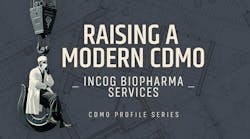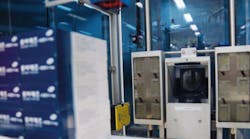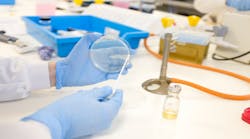By Agnes Shanley, Editor in Chief
In this [April 2006] issue of Pharmaceutical Manufacturing, we look at India, which is quickly becoming a center of excellence for drug development and manufacturing. Its workforce, among the most highly educated in the world, has enabled a decade of rapid growth to take place, and Indian engineers and scientists will be excellent peers and formidable competitors in the years to come.
Although the contributions of ancient Indian mathematicians and thinkers are only now beginning to be appreciated, the tenacity of Indias scientists was seen long before Indias modern economy began to develop. During the colonial period, or so the story goes, the British attempted to restrict native university enrollments. A brain-numbing curriculum established for Indian students, which included the rote memorization of logarithmic tables, failed to deter some of the centurys greatest thinkers people like Srinavasa Ramunujan, Venkata Raman and Prasanta Chandra Malhanobis, all of whom were later elected Fellows of the Royal Society.
What they may be lacking is hands on training in subjects such as validation, and a more interdisciplinary approach to drug development, which is being tackled by institutions such as Bangalores National Center for Biological Sciences. Pall aims to address the need for more practical training through a center of excellence that it is now setting up in Bangalore, which will include proteomics and validation laboratories. Heading up this effort, and an example of the reverse brain drain now being seen in India, is Vinay Jobanputra, general manager of Pall India Pvt. Ltd., who recently moved back after living in the U.S. for many years.
Clearly aiming for innovation, India now graduates thousands of engineers and scientists each year. And these specialists are writing a growing percentage of important scientific papers that are published around the world (a number that doubled between 1998 and 2003).
The number of U.S. patents awarded to Indian scientists rose by 37% in 2003, and continues to increase, according to Subodh Priolkar, director of the Indian Pharmaceutical Association, who spoke about Indian pharmas growth at the Interphex conference in New York City last month. Productivity is also high, he says, averaging 70 hours per week per worker in India, vs. 35 to 45 hours per week in the U.S. and Europe.
India is now the worlds fourth largest drug manufacturer, based on volume (14th in terms of value), according to Priolkar. Pharma exports are growing by 45% per year, he said, and, by 2010, should account for $25 billion.
If the U.S. Food and Drug Administration (FDA) ever set up a branch outside the U.S., as it has in the U.S. protectorate of Puerto Rico, India would be a logical choice. After all, India has 74 FDA-approved manufacturing facilities, the largest number outside of the U.S., and last year, Indian firms filed nearly 20% of the abbreviated new drug applications (ANDA) submitted to FDA. And the idea may not be so far-fetched. USP has already opened an office in Hyderabad (see "USP India's New Facility Opens Its Doors").
The past few years have brought explosive growth for Indian companies. Consider Ranbaxy Laboratories, already one of the worlds 100 largest pharma companies, which aims to become one of the top five by 2012. On the following pages, Ranbaxys global quality director, Ranjit Barshikar, discusses the challenges that such aggressive growth poses (see "Ranbaxy's Designs on Quality"), while engineering experts from Tata Consultancy Services discuss virtual sensors and their potential for improved pharma process control (see "Virtual Sensors for Advanced Pharmaceutical Process Control").
Well clearly be hearing more from your peers in India, and you can count on increased coverage of the region in our magazine and on our web site.






